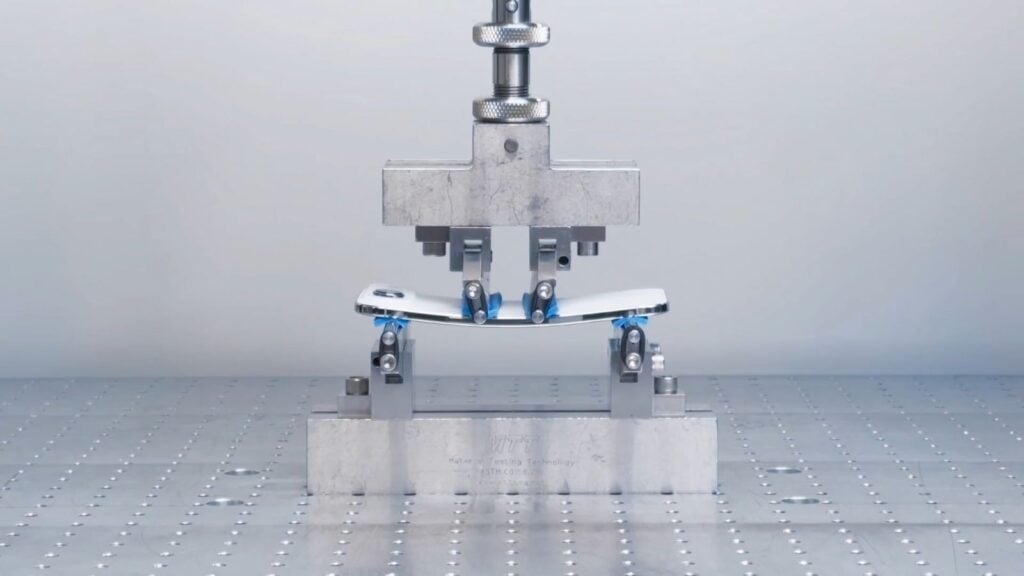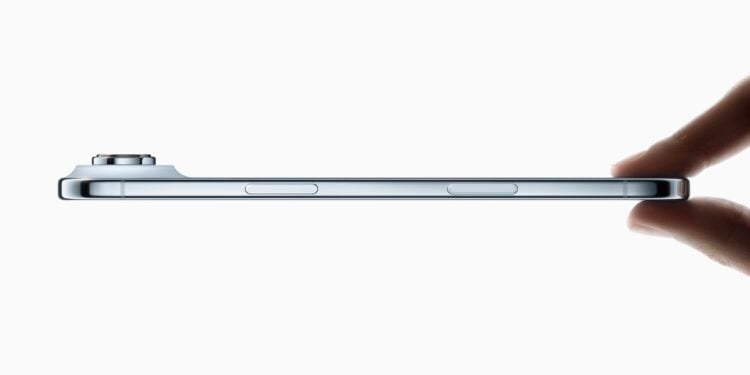The iPhone Air is the thinnest iPhone Apple has ever introduced. At just 5.6 millimeters at its thinnest point, it even surpasses the iPhone 6, which once made headlines for its delicate design. The question that naturally arises: How sturdy is a smartphone with such an extremely thin build?
Memories of the iPhone 6 are still fresh. At 6.9 millimeters, it was already remarkably slim, but it had a tendency to bend under pressure. This became a topic of discussion, particularly in YouTube videos, where testers used excessive force to demonstrate the device's weak points. Since then, the discussion about bending strength has accompanied every new ultra-thin iPhone. With the iPhone Air, however, Apple is relying on new materials and modernized testing methods to avoid precisely this problem.
Ultra-light and ultra-thin
The iPhone Air's design is striking for its elegance. At 5.6 millimeters, it's not just thinner than the iPhone 6, but the thinnest iPhone ever. To ensure stability, Apple, for the first time, uses a titanium frame. This material is significantly more durable than the aluminum used in the iPhone 6.
The bending test under pressure
To demonstrate its strength, Apple provided Tom's Guide with a test video. In this test, the iPhone Air was subjected to a 130-pound load applied to the center of the device. The footage shows that the iPhone Air bounces back remarkably well after the pressure and exhibits no permanent deformation. Thus, it not only meets but exceeds Apple's own standards for bending strength.

Differences to the iPhone 6
A direct comparison demonstrates the progress Apple has made since the iPhone 6. Back then, the aluminum frame caused stability issues, which the iPhone Air is designed to overcome with titanium. Apple itself therefore calls the iPhone Air the most durable iPhone ever built.
Further stress tests from Apple
In addition to the bend test, Apple also released footage of other durability tests. These include the Ceramic Shield 2 front cover, which is used in the iPhone 17 series and is said to be three times more scratch-resistant than the previous model. Another video shows simulated drops with the iPhone 17 Pro, which the device is also said to survive well. While these tests yield positive results, they come directly from Apple. External testing by independent bodies is still pending.
- Apple Watch Ultra 3 vs. Apple Watch Ultra 2: The Differences
- iPhone 17: Why this model is so convincing
- iPhone Air or iPhone 17 Pro? All the differences compared
- iPhone 17 vs. iPhone 16: All the differences in detail
- iPhone 17 Pro vs. iPhone 17 Pro Max: Differences at a glance
- iPhone Air: Seven facts about the new ultra-thin smartphone
- AirPods Pro 3: Apple's headphones with 8 exciting upgrades
- AirPods Pro 3 vs. AirPods Pro 2: The big comparison in detail
- Is the iPhone 17 Pro not worth it? The iPhone 18 Pro in focus
- Apple Watch Ultra 3 vs. Ultra 2, Series 11: Battery comparison
- iPhone 17 Pro: Everything about the new camera platform & more
iPhone Air: Thin, light, yet sturdy
Based on current information, everything suggests that the iPhone Air won't bend like the iPhone 6. The titanium frame, improved construction, and rigorous stress testing point to a robust device that remains stable despite its ultra-thin design. Independent tests will soon reveal how the iPhone Air performs in practice. It is already considered the thinnest and strongest iPhone Apple has ever launched. (Image: Apple)
- iPhone 17 & iPhone 17 Pro Reviews: Display, Battery, Performance
- iPhone Air reviews: Is the thinnest iPhone worth it?





